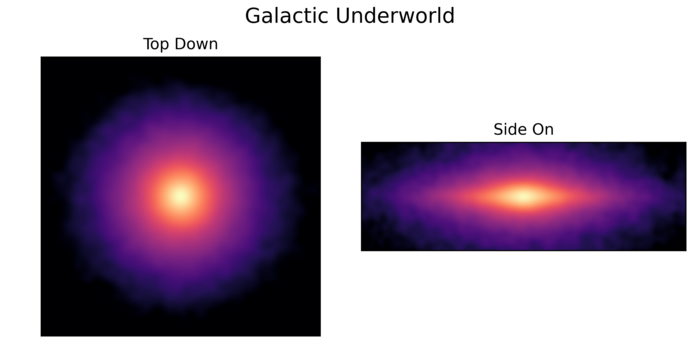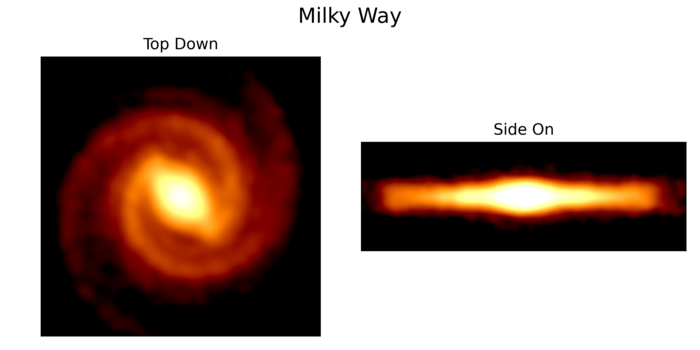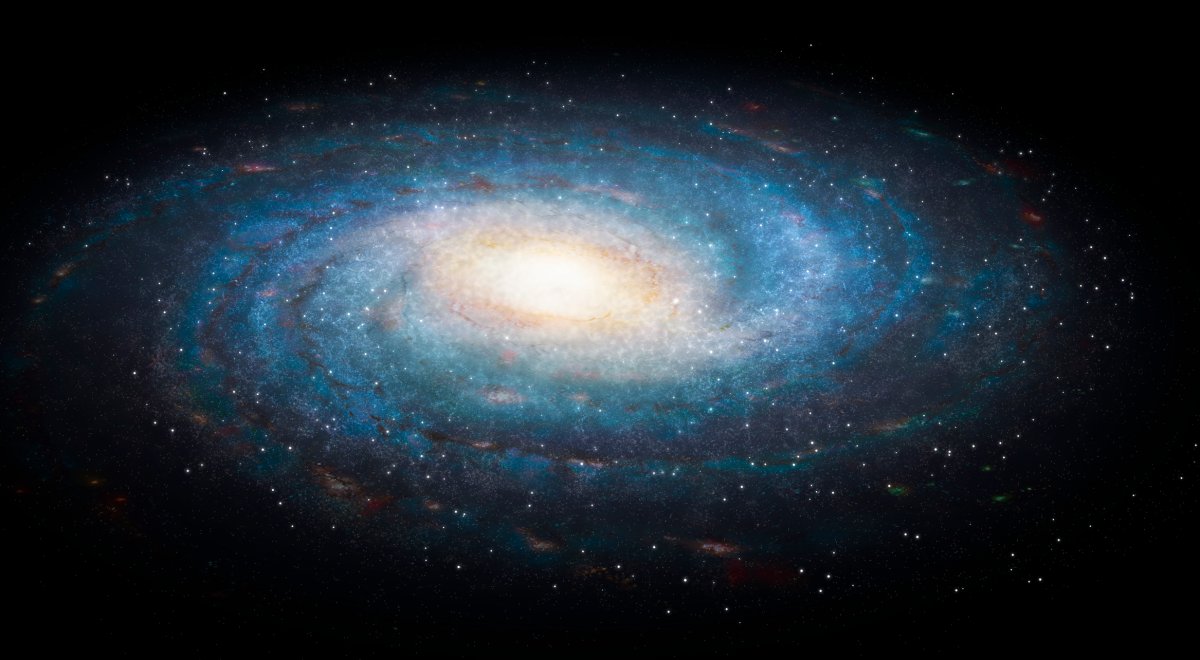Where can we find the first stars that made up the Milky Way? Until now, this seemingly simple question has puzzled scientists. But thanks to astronomers from the University of Sydney, we now have a map.

Using complex models of the life cycle of billion-year-old stars, researchers from the Sydney Institute for Astronomy have developed the first map of what they’re calling the “galactic underworld,” a chart of ancient dead stars, among the oldest in the Milky Way.
The trajectories these stars took — from their creation billions of years ago to their violently explosive deaths, up to now — have made the remnants of the first Milky Way stars difficult to find.
“Until now, we had no idea where to look,” said the study’s co-author Peter Tuthill according to a news release. “The bones of these rare massive stars had to be out there, but they seemed to shroud themselves in mystery.”
When massive stars die — we’re talking stars eight times larger than the Sun — they can form neutron stars or black holes by violently ejecting the outer portions of the star in an explosive supernova. Depending on its starting mass, the star can keep compressing in on itself to become a black hole, or stabilize into a neutron star. When these stars go supernova, the resulting explosion “kicks” them far from their original starting point.
Newly-formed neutron stars and black holes are much easier for astronomers to find because their behaviour through space is based on the current geography of the galaxy. But ancient stars pose a much harder challenge.
“The oldest neutron stars and black holes were created when the galaxy was younger and shaped differently, and then subjected to complex changes spanning billions of years. It has been a major task to model all of this to find them,” Tuthill said.
“It was like trying to find the mythical elephant’s graveyard,” he added.
And now that it’s been uncovered, astronomers are marvelling at the scope of this galactic graveyard.
Researchers’ models of the locations of ancient dead stars reveal that some have been “kicked” far outside the general confines of the Milky Way, and around a third have been ejected into the depths of interstellar space, never to return.

“These compact remnants of dead stars show a fundamentally different distribution and structure to the visible galaxy,” said lead author David Sweeney, a PhD student at the University of Sydney. “The ‘height’ of the galactic underworld is over three times larger that the Milky Way itself.”
The generated maps show that the galactic underworld of the Milky Way is much more “puffed up” than what our home galaxy looks like normally, as the kinetic energy of supernovae expel these ancient dead stars into a halo around the visible Milky Way.

The characteristic spiral arms of the Milky Way also disappear in the galactic underworld version of our galaxy, since supernovae “kick” star remnants in random directions, creating a blurring effect, according to the University of Sydney press release.
“It was a bit of a shock,” said Sanjib Sharma, a research fellow who helped develop the models. “I work every day with images of the visible galaxy we know today, and I expected that the galactic underworld would be subtly different, but similar in broad strokes. I was not expecting such a radical change in form.”
The galactic underworld version of our Milky Way is much larger and less ordered than the visible galaxy because of the randomness caused by supernova “kicks,” Sweeney said.
“The hardest problem I had to solve in hunting down their true distribution was to account for the ‘kicks’ they receive in the violent moments of their creation. Supernova explosions are asymmetric, and the remnants are ejected at high speed — up to millions of kilometres per hour — and, even worse, this happens in an unknown and random direction for every object.”
“It’s a little like in snooker,” Sweeney added. “If you know which direction the ball is hit, and how hard, then you can work out where it will end up. But in space, the objects and speeds are just vastly bigger. Plus, the table’s not flat, so the stellar remnants go on complex orbits threading through the galaxy.”
On top of that, the snooker table of space has no friction, so these corpse stars are still hurtling around.
“Almost all the remnants ever formed are still out there, sliding like ghosts through interstellar space,” Sweeney said.
In fact, one of these ancient star remnants may be relatively close to Earth, according to Tuthill.
“For me, one of the coolest things we found in this work is that even the local stellar neighbourhood around our Sun is likely to have these ghostly visitors passing through,” Tuthill said. “Statistically our nearest remnant should be only 65 light years away: more or less in our backyard, in galactic terms.”
For Sweeney, the most exciting part of this study is that it opens up so many possibilities for future scientific exploration.
“Now that we know where to look, we’re developing technologies to go hunting for them. I’m betting that the ‘galactic underworld’ won’t stay shrouded in mystery for very much longer.”







Comments